
Manufacturing environments rely on dust collection systems to keep air clean and processes stable - but when conditions misalign, a dust collector explosion can turn routine operations into a serious incident.
Fine dust particles suspended in air, an ignition source, and equipment confinement can create rapid pressure rise that damages collectors, injures personnel, and halts production. Understanding combustible dust behavior is the first step to reducing risk and protecting people and equipment.
This article explains why collector explosions happen, which materials pose risks, and the practical steps you can take for explosion prevention while aligning with OSHA and NFPA guidance. If you're evaluating upgrades, start by confirming your industrial dust collection systems are properly sized, installed, and maintained for your application.
What Causes a Dust Collector Explosion?
A dust collector explosion requires five specific elements to occur simultaneously - what safety professionals call the dust explosion pentagon. Removing any one of these five elements can prevent an explosion from occurring.
You need fuel (combustible dust), oxygen (present in the surrounding air), an ignition source, dust particles floating in the air at proper concentration, and confinement (like inside your collector or ductwork). The ignition sources often prove most unpredictable: static electricity from poorly grounded equipment, overheated bearings, sparks from cutting or welding operations, or motors running beyond safe temperatures.
Poorly designed or maintained systems significantly increase explosion risk. Common problems include insufficient conveying velocity allowing dust to settle in ducts, ineffective grounding and bonding, leaking doors or gaskets that disturb settled dust layers, and filters overloaded beyond design differential pressure. Each factor increases the likelihood that dispersion and confinement occur when an ignition source appears.
Modern dust collection systems incorporate multiple safety features to interrupt this chain reaction, but these protective measures require proper specification and regular maintenance. Missing or undersized explosion venting panels, neglected spark detection systems, or incorrect control logic can defeat safety layers that would otherwise limit pressure rise or prevent propagation to connected equipment.
Which Materials are Considered Combustible Dust?
Many common manufacturing materials generate combustible dust: metals (aluminum, magnesium, titanium), wood products, grain and flour, sugar, paper, plastics and resins, pharmaceuticals, and various chemicals. Materials that don't burn in bulk form can still be explosive when finely divided. Whether a material poses hazards depends on particle size distribution, moisture content, shape, density, and volatility.
NFPA 652 identifies combustible dust as fine particulate matter that poses fire and explosion risks when dispersed in air. Typically, combustible dust particles measure less than 500 microns in diameter - fine enough to remain suspended in air for extended periods.
NFPA guidance requires facilities to identify combustibility and perform comprehensive Dust Hazard Analysis (DHA). The updated NFPA 660 standard consolidates previous requirements from NFPA 652, 484, and other commodity-specific standards, providing unified guidance across industries. If you handle suspect materials, arrange professional testing to determine explosibility characteristics including Kst (explosion severity) and Pmax (maximum explosion pressure) values that inform protection system design.
Dust Collector Explosion Prevention
Warning signs requiring immediate action include visible dust layers on rafters or equipment, hot surfaces or burning smells near process equipment, static electricity discharges, unusual noise or vibration, frequent filter issues, rising differential pressure without load changes, or erratic pressure pulses indicating blocked or failed components. Any of these signals can indicate conditions for potential explosions developing.
Ignoring warning signs risks worker injuries, asset damage, extended outages for repairs and restoration, and regulatory consequences including OSHA inspections under the Combustible Dust National Emphasis Program.
Don't wait for disaster - download our maintenance checklist and schedule a comprehensive system inspection immediately.
How to Prevent Dust Collector Explosions
Explosion prevention requires a systematic approach across design, protection, and maintenance:
Design Choices: Match your system to process requirements and dust characteristics. Select the correct collector type and filtration media, ensure proper duct velocity and layout to keep particles moving, and maintain appropriate air-to-cloth ratios with effective offline cleaning cycles. Verify compliant grounding and bonding throughout the system and ensure proper isolation between process zones. A.C.T.'s industrial dust collection systems are engineered with these principles built in.
Safety Add-ons: Where testing and DHA indicate risk, implement explosion venting on collectors with safe relief routing, add explosion isolation valves on inlet and outlet ducts to prevent flame propagation, and incorporate spark control through detection systems and arrestors. Consider wet collection methods where appropriate for high-risk applications. A.C.T.'s explosion vent dust collectors and specialized product lines like WeldPack and LaserPack series address specific ignition source challenges.
Maintenance Best Practices: Establish rigorous schedules for filter changes, leak detection, hopper and airlock function testing, valve and control verification, and comprehensive facility housekeeping to prevent dust accumulation. Regular inspection prevents small issues from becoming major hazards. Follow A.C.T.'s inspection and maintenance checklist for systematic prevention protocols.
Safety Regulations and Compliance Considerations
NFPA 652 provides fundamental requirements for managing combustible dust fire and explosion hazards, while OSHA enforces compliance through its National Emphasis Program targeting industries with histories of dust-related incidents. The updated NFPA 660 standard consolidates previous requirements from multiple standards, providing unified guidance for combustible dust management across industries.
Conducting and maintaining a current Dust Hazard Analysis remains central to compliance and risk reduction. DHAs are required for all existing facilities handling combustible dust and must be reviewed every five years or whenever significant process changes occur. Facilities must identify all potential fire and explosion hazards, evaluate consequences, and recommend appropriate controls.
Working with experienced system manufacturers ensures your dust collection systems meet current regulatory requirements and incorporate appropriate safety measures from initial design through ongoing operation. Professional guidance becomes essential during facility expansions, process modifications, or regulatory updates affecting existing safety measures.
A.C.T.'s Approach to Dust Collector Safety
From system selection to startup and beyond, A.C.T. supports safe operation with robust equipment, integrated spark control, properly sized explosion venting, and accessories that maintain both performance and compliance. Many systems incorporate spark detection and suppression options and can be configured with isolation valves and explosion protection as indicated by your facility's DHA.
Application-specific packages like WeldPack and LaserPack address hot-work ignition sources directly at their origin. Our technical team provides ongoing consultative support to help customers navigate regulatory requirements and adapt to changing operational needs. Maintain your safety program using A.C.T.'s Inspection Log & Maintenance Checklist.
FAQs
What is the most common cause of a dust collector explosion?
The combination of combustible dust dispersion plus an ignition source (typically sparks, static electricity, or hot surfaces) inside confined collector housing or ductwork. Managing ignition sources and preventing dust accumulation are critical control measures.
How often should I inspect my dust collection system?
Follow your DHA recommendations and manufacturer guidelines. Most facilities perform daily visual checks and formal monthly or quarterly inspections, with annual comprehensive reviews of protection devices including explosion venting panels and isolation valves.
What materials are most likely to create combustible dust?
Metals (aluminum, magnesium, titanium), wood products, grain and flour, sugar, plastics, paper, pharmaceuticals, and many chemicals - especially when finely divided and dry. Professional testing confirms specific material explosibility characteristics.
How does routine maintenance prevent dust collector explosions?
Regular maintenance prevents dust particles from accumulating, ensures protection devices function properly, and identifies developing problems like rising differential pressure or seal leakage before they create hazardous conditions.
Are there warning signs before a dust collector explosion occurs?
Yes, including visible dust accumulation, equipment overheating, unusual vibrations, static electricity discharge, unexpected pressure changes, and declining system performance, all requiring immediate investigation and corrective action.
Future Dust Collector Explosion Prevention
Proactive design, documented procedures, and systematic maintenance programs provide the best long-term defense against potential explosions. As processes evolve, update your DHA, revisit system sizing and ductwork layout, and verify protection systems still match current risk profiles. Regular evaluation ensures explosion prevention measures remain effective as operations change.
Safe air quality starts with properly designed dust collection systems and disciplined maintenance practices. Manufacturing facilities have fundamental responsibility to protect workers and surrounding communities through comprehensive combustible dust management programs that address all elements of the dust explosion pentagon.
Ready to evaluate your current setup or upgrade to safer systems? Request a quote today or contact our team to schedule a comprehensive safety evaluation. Ensure your facility meets all current safety standards with our maintenance checklist.


























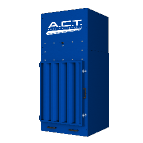
%20Collectors%20Image.png?width=143&height=143&name=ADC%20(Ambient)%20Collectors%20Image.png)
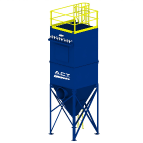

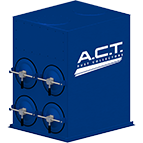
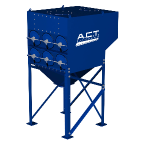
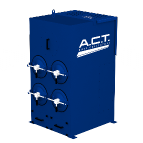


















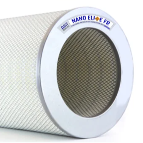


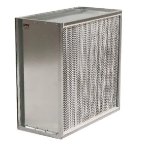
.png?width=240&height=91&name=ACT%20Dust%20Collectors%20Logo%20Solid%20White%202020%20(1).png)
.png?width=148&height=149&name=usa-manufactured-dust-collectors%20(1).png)